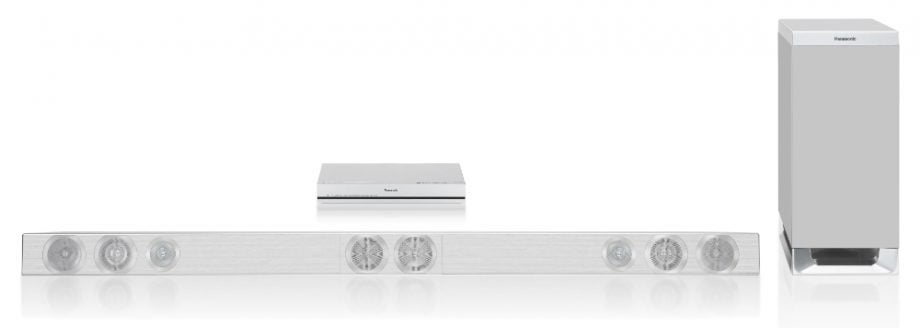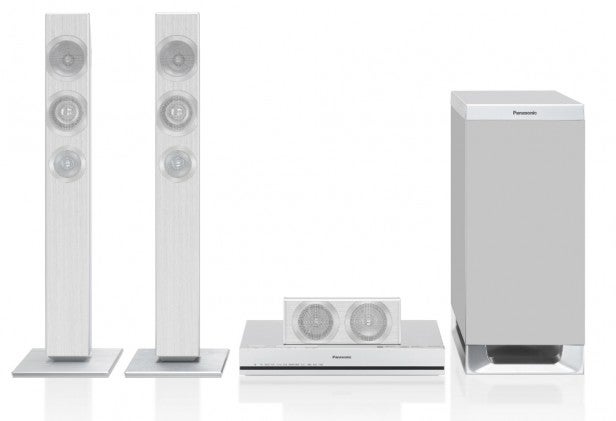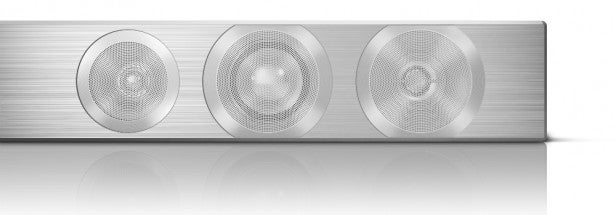Panasonic SC-HTB770 review
Panasonic SC-HTB770 review
A versatile and stylish 3.1-channel soundbar system

Sections
- Page 1 Panasonic SC-HTB770 review
- Page 2 Features, Operation, Performance and Verdict Review
Verdict
Pros
- Wide choice of installation options
- Stylish design and decent build
- Powerful, warm and smooth sound
Cons
- Subwoofer occasionally unruly
- Basic operating system
- Expensive
Key Specifications
- Review Price: £429.99
- Soundbar or free-standing setup
- Built-in Bluetooth
- Three HDMI inputs
- Dolby Digital and DTS decoding
- 300W total power output
What is the Panasonic SC-HTB770?
It’s Panasonic’s top-of-the-range soundbar system, adding a number of features not found on the cheaper SC-HTB570. To call it a ‘soundbar’ is really a misnomer – it’s actually a 3.1-channel system that can be bolted together into a soundbar or separated into a left-centre-right formation, with a wireless subwoofer providing the bass (as pictured below). This versatility is the SC-HTB770’s big selling point, making it a great choice if living room space is limited and you need a system to match your layout.

Panasonic SC-HTB770 – Design
In the box you’ll find three speakers – left, right and centre – a wireless subwoofer and a separate set-top box housing all the connections and amplification. The speakers boast a delightful brushed silver finish, with a lustrous gloss-black rear end. You can glimpse the speaker drivers peeking through meshes on the front, each one framed by a shimmering silver ring.
Build quality is superb – the speakers are solidly constructed and weighty. The subwoofer isn’t quite as impressive, sporting a lightweight, plasticky cabinet, but from afar it looks snazzy enough. Its only controls are an on/off button.
The control unit’s design is similarly pleasant if uninspired. It’s a silver box with a black strip running along the fascia, which houses LED indicators for sound modes and inputs, and four buttons along the top. Its compact design (310mm wide by 188mm deep) could be useful when squeezing it into a cramped AV rack.
On the back is a generous range of sockets, more akin to a full-size all-in-one system than a soundbar. You get three HDMI inputs and an Audio Return Channel-capable output – all of which support 3D – turning this into a decent HDMI switcher. What’s more, signals are passed through the unit when it’s in standby, so you don’t have to turn it on just to watch TV.
These are joined by two optical digital audio inputs, one of which could be used to hook up a TV if your set doesn’t offer ARC. There’s also a USB port for service use, but not for media playback.

Panasonic SC-HTB770 – Installation
The speakers can be installed in a variety of ways. Firstly, you have to decide whether to mount them on the wall using the supplied brackets, or place them on a tabletop. In both cases the three speakers can be joined together as a 1230mm-wide soundbar or separated into left, right and centre speakers.
For the soundbar option, there’s a metal bracket in the box that holds all three speakers together with screws – the 178mm centre speaker links them up in the middle. Once assembled you can attach L-shaped leg stands that lift the soundbar off the surface slightly, or support legs and feet that stand the bar upright on the surface. It’s best suited to TVs between 55 and 65-inch.
Alternatively, the speakers can be separated and placed around the TV. When placing them on a flat surface, there are square bases that screw onto the bottom of the left and right speakers, with speaker feet for the centre. For wall mounting, each speaker comes with its own hook bracket.
Because the subwoofer is wireless you don’t have to worry about where to place it. It pairs automatically with the main unit and its volume is controlled with the supplied remote.
The supplied cables plug into colour coded terminals on the back of the control unit, and attach to springclips on the speakers. The hanging wires look messy when wall mounted, so you’ll need a way to hide them. For vertical placement, the speakers have built-in cable management, allowing the wires to be fed through the bases.

